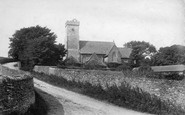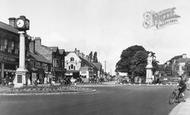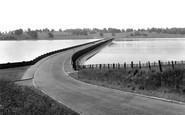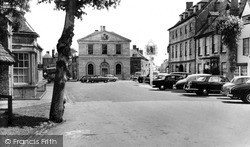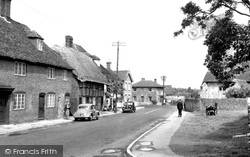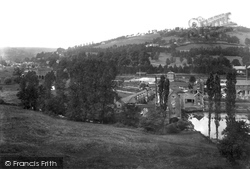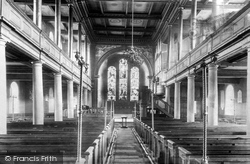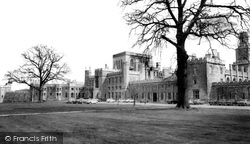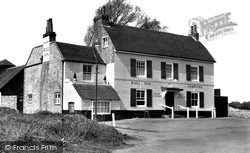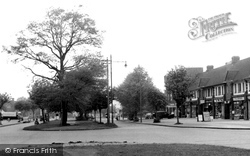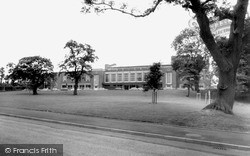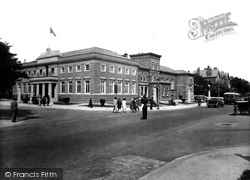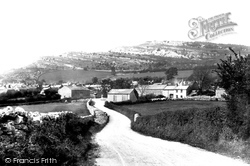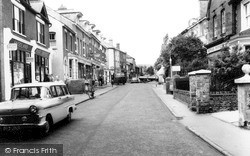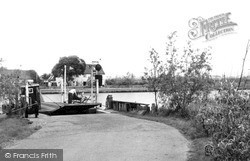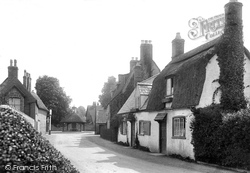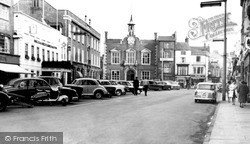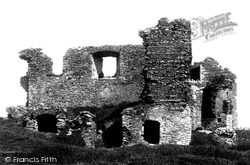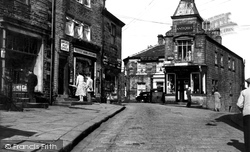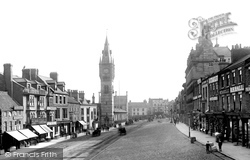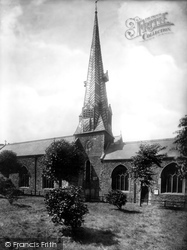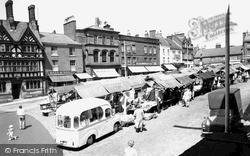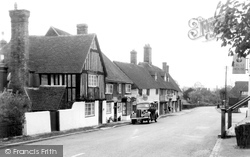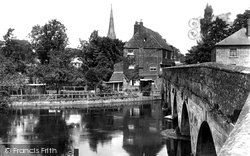Places
18 places found.
Those places high-lighted have photos. All locations may have maps, books and memories.
- Hythe, Kent
- Hythe, Hampshire
- Small Hythe, Kent
- Bablock Hythe, Oxfordshire
- Methwold Hythe, Norfolk
- Hythe, Somerset
- Hythe, Surrey
- Hythe End, Berkshire
- The Hythe, Essex
- Egham Hythe, Surrey
- West Hythe, Kent
- New Hythe, Kent
- Broad Street, Kent (near Hythe)
- Horn Street, Kent (near Hythe)
- Newbarn, Kent (near Hythe)
- Newington, Kent (near Hythe)
- Broad Street, Kent (near Hythe)
- Stone Hill, Kent (near Hythe)
Photos
360 photos found. Showing results 2,101 to 360.
Maps
101 maps found.
Books
10 books found. Showing results 2,521 to 10.
Memories
4,406 memories found. Showing results 1,051 to 1,060.
The Wills Family
Ambrose Wills, Inn Keeper and Farmer at the Ashberton Arms West Charleton, buried at the Church. His son George took on the pub and farm when the village was sold by the Marques of Northampton on the 22 of September 1919. ...Read more
A memory of West Charleton in 1900 by
Caravan Park
The caravan park by the river Derwent has now closed, my extended family had a static there and the countryside was beautiful. In the 1960s Romany gypsies would camp in the woods.
A memory of Whatstandwell in 1976
Oh For Thing Past.
I was born in 1941 in St Augustine's Rd at the top of Chalk Pit Ave. The memory I have are, the Bull Inn at the corner of Sandy Lane next to Nashes Paper Mills. Ridge ways ? the all one shop, {things past}. Doing paper rounds ...Read more
A memory of St Paul's Cray in 1950 by
Born In Lincoln,1957
I was born in Lincoln May 26, 1957 to American parents. My father was in the United States Air Force and we lived at 65 South Park. I was born just a few doors down at the Eastholme Maternity Home. My family returned to America ...Read more
A memory of Lincoln in 1957 by
Lawrence Weston Comprehensive School
I attended Lawrence Weston Comprehensive School from September 6, 1963 until February 1969. Although I had passed my 11 Plus examination very highly (highest in the southwest of England) and wanted to go ...Read more
A memory of Lawrence Weston in 1963 by
Ode To Wallsend
ODE TO WALLSEND I was born at Wallsend Village green in the heart of Wallsend Town, I spent my childhood in an era great to be around, We all grew up together and played in our back lanes, My cousins and my neighbours in the ...Read more
A memory of Wallsend in 1976 by
Better Times
Great Britain is in disarray, I've never seen the likes. Worse than when Thatcher telt us Geordies, to get on wa bikes. They closed the yards and factories, we had them by the score, These places now just memories, of better ...Read more
A memory of Wallsend in 1985 by
What An Education!
It's pity that there are no images of Cannock's schools on this archive. Cannock actually had a number of schools long before many other towns. Primary education for all didn't come into effect until the Education Act of 1870 made it ...Read more
A memory of Cannock by
Waiting And Waiting. Where Was She?
There was a tremendous interest when this reservoir was officially opened by the Queen Mother. The local papers carried details of the scheduled times and events connected with this event. Not least of all, the Queen's ...Read more
A memory of Rugeley by
So Many Memories
The night club under the Post Office was the Fouix Boo.. not sure if that's how it was spelt. Just up from there was a cafe called the Harbour Lights and a toy shop further up. I'm trying to find the name of the milk bar that was on ...Read more
A memory of Streatham by
Captions
4,899 captions found. Showing results 2,521 to 2,544.
The Town Hall, built in 1766 by William Chambers and paid for by the Duke of Marlborough, has a prominent site overlooking the Market Place.
Taken over by the Navy in the Second World War, it was Eisenhower's headquarters in 1944, when he was Supreme Allied Commander.
In the foreground lies Wimberley Mill, run in 1900 by the Critchley family as a pin factory. Hidden beyond it is the Thames and Severn Canal, and then the railway.
The church also contains mural paintings completed in 1845 by the Penrith-born artist Jacob Thompson. The pews were installed in 1887.
An appeal for funds was launched, and by the middle of November £40,000 had been raised. 1,700 acres were purchased by the Trust, and in the following year a further 165 acres.
This popular public house in Goring Street was formerly known as The Bull's Head; the old sign, which hung over the door for years, was removed by the brewery and transferred to a public house in East
By 1626 it had been acquired by the Fox family, and was known as Foxholleys. It subsequently belonged to Zaccheus Walker, who rebuilt the house in grand style, calling it The Hollies.
The Civic Hall was opened by the Queen in 1962 and served as a venue for social gatherings, meetings, exhibitions and amateur theatricals.
At the same time Blackpool and Lytham were linked by the coast railway. The Baths and Assembly Rooms offered public swimming baths, newspaper and reading rooms and a concert hall.
Over on the right is an onion and dragon lamp standard designed by the borough engineer Joseph Hall, who was also responsible for Neptune's fountain in the Prom. These street lamps appeared in 1897.
Its caves have revealed objects from the late Stone Age to the Roman period and on its summit is a fort built by the Brigantes.
The first Knott End ferry began as a family business shortly after work on Fleetwood started, but in 1894, was taken over by the municipal council.
Street, with its branch of the National Provincial Bank (later to become the National Westminster Bank) on the right, and the local Post Office, shoe-shop, and newsagents on the left, was bedevilled by the
When not being used by the ferry, the chain is at the bottom of the river. This is the southern bank of the river Yare, which is in open country.
The end of the street opens out into the village square, complete with pump and clock, and overlooked (though not in this picture) by the church.
Its bell turret was replaced in 1974 by the South Holland Centre, an extremely busy building architecturally but quite enjoyable.
Kendal appears to have become derelict by the beginning of the 17th century.
founded in this pretty, cobble-streeted West Yorkshire town after the famous literary family made the Parsonage their home in 1820, was already well under way, if this 1950s photograph is anything to go by. The
The street is dominated by the Italianate clock tower, paid for by Joseph Pease; along with the Town Hall and covered market, it was designed by Alfred Waterhouse and built in 1864.
The curious broach spire - one of three in North Devon - was added in 1389, paid for by the corporation. S.
By the mid-1950s, Leek had become a major centre for the knitwear industry: three-quarters of all the scarves worn in the UK were said to have been manufactured in the town.
Hartfield is at the heart of 'Winnie the Pooh' country - conceived by the author A A Milne. 'Pooh Corner' is in the High Street and all the 'Enchanted Places' are in the parish.
The bridge was built by the Bishop of Salisbury around 1240 to facilitate trade between the new city and the south: the Cathedral spire can be seen in the background.
It is separated from the sea by the great Loe Bar, which blocked the Cober estuary to shipping in historic times.
Places (18)
Photos (360)
Memories (4406)
Books (10)
Maps (101)



